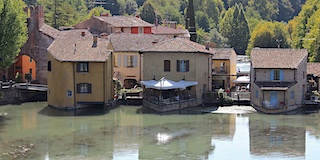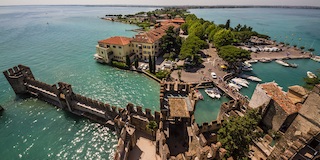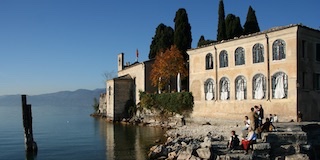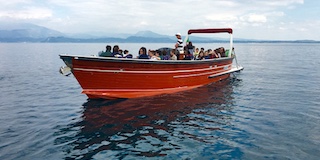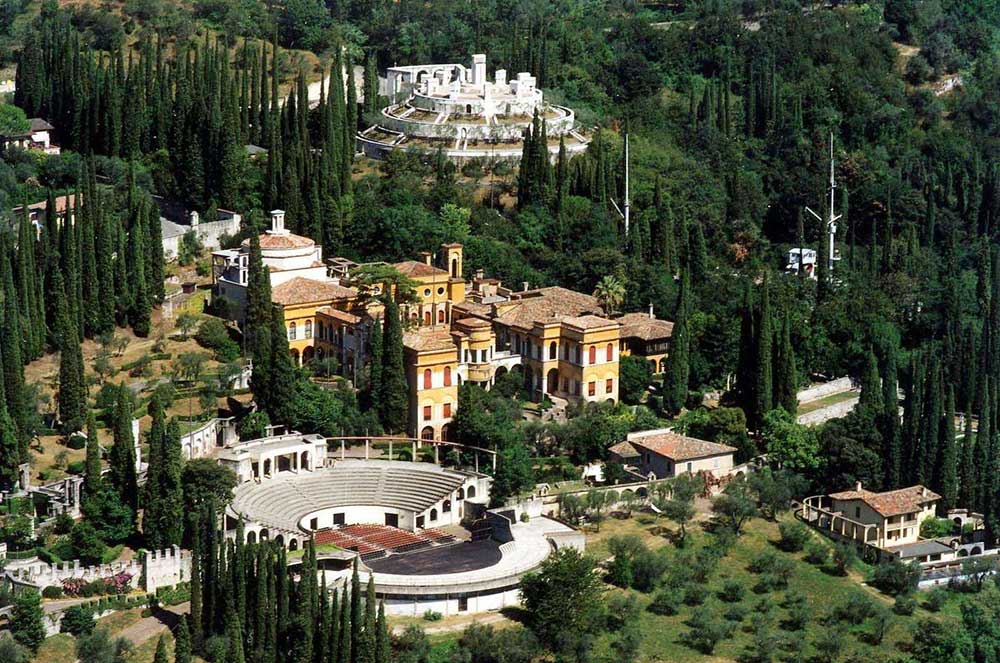Peschiera
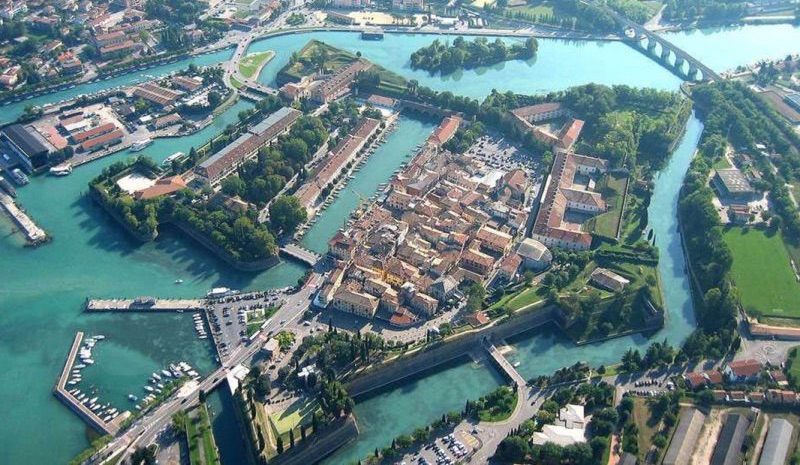
Peschiera is one of the main towns of Lake Garda. It is one of the oldest and one of the most interesting for a guided tour together with one our tour guide of Peschiera. The tour is a pleasant walk of about an hour and a half. There are many topics to deal with during the tour of Peschiera. It can be a destination in its own, or become just one stop in a longer itinerary that also includes Sirmione and Desenzano going west, or Lazise, Bardolino, etc., going east.
Info and guided tour in Peschiera:
+39 333 2199 645 info@veronissima.com P.I. 03616420232 C.F. CPPMHL74L13L781C
Peschiera Guided Tour
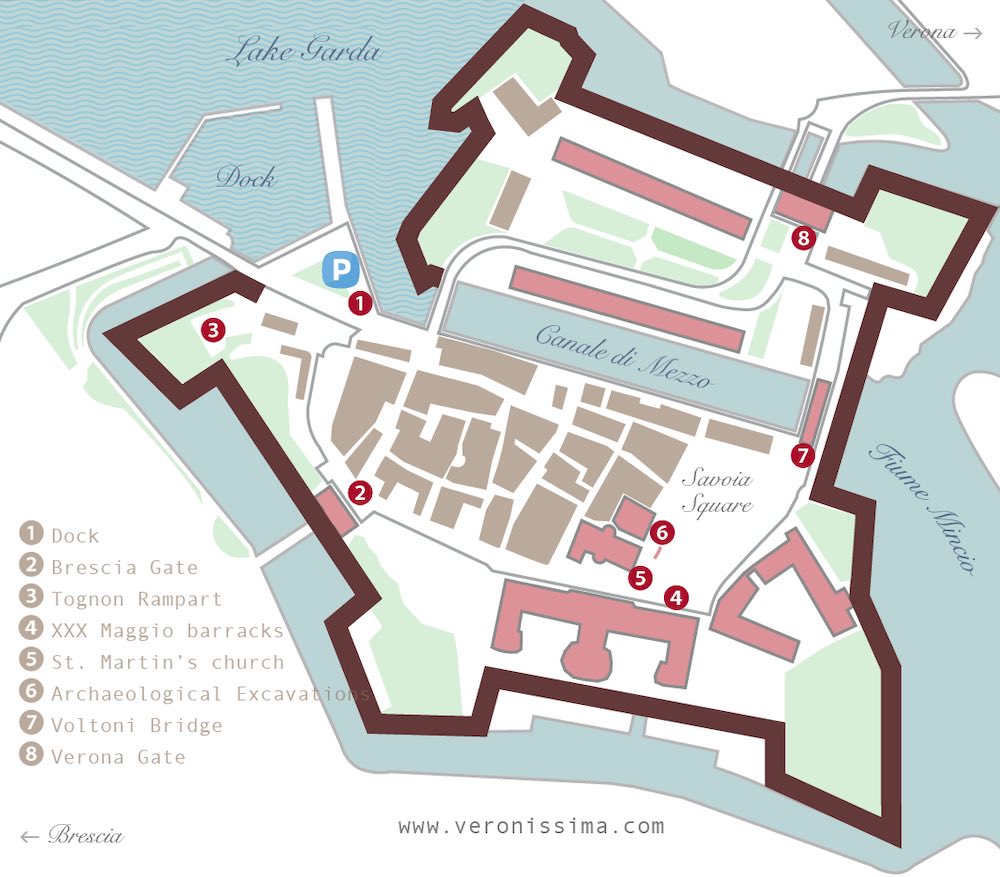
The tour of Peschiera starts from the dock area
where, in addition to the small private boats, often stop larger ships of
the lake Garda public lines. From here you can embark for trips on the
water to reach other towns and villages on the coast of lake Garda.
In front of us the lake opens up in its maximum width. On the right there
is the massive Mt. Baldo, on the left the profile of Mt.
Napoleone (Monte Pizzocolo). The view is of great impact.
In the centre of the square is the war memorial.
There is a convenient parking for private cars and an easy
stop for tourist coaches to let the passengers out.
The Fortress
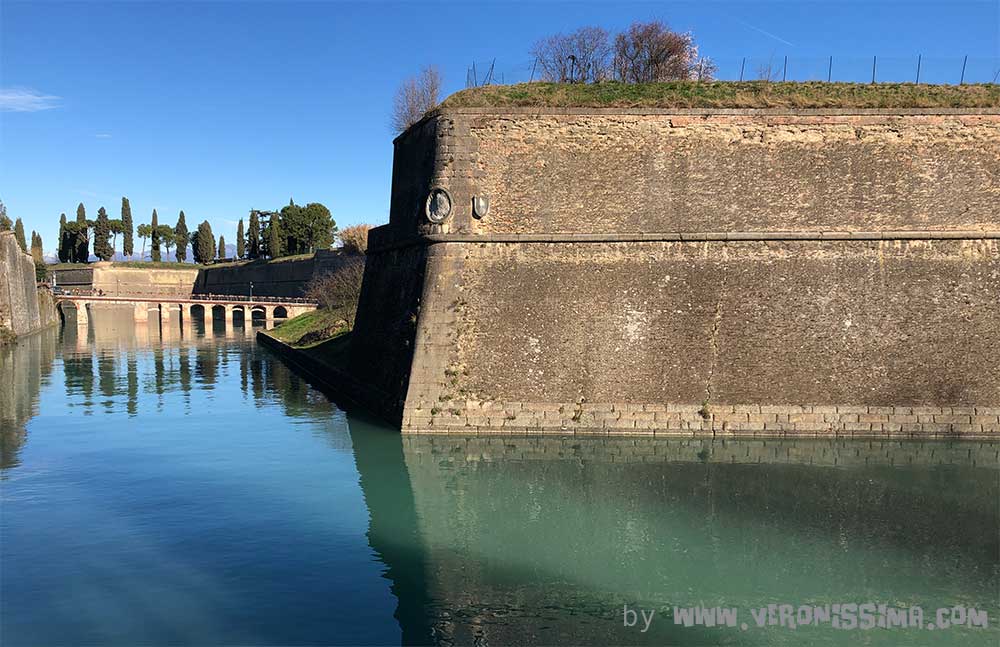
Peschiera has always had a great strategic importance.
It is located at the mouth of the river Mincio, on the road
that crosses northern Italy from east to west since ancient
times and which today has become the A4 Milan-Venice motorway. The
historic centre of Peschiera has been shaped by military needs,
transforming it into an imposing and picturesque fortress.
Coming out from Brescia gate, which takes its name from the direction in which it opens, you can admire the imposing brick wall of the bastion. It emerges from the waters of one of the four canals into which the river Mincio divides, and which acts as a moat around the fortifications. They are massive walls, but built on oak poles implanted at the bottom of the canal. It is a construction technique that the Venetians were very familiar with. They used it extensively in Venice, where large parts of the city are built on platforms raised above thick piling on the seabed. The wood, embedded in the mud, does not come into contact with the air, so it does not rot and is subject to a kind of fossilization that preserves it over time.
The Tognon Bastion
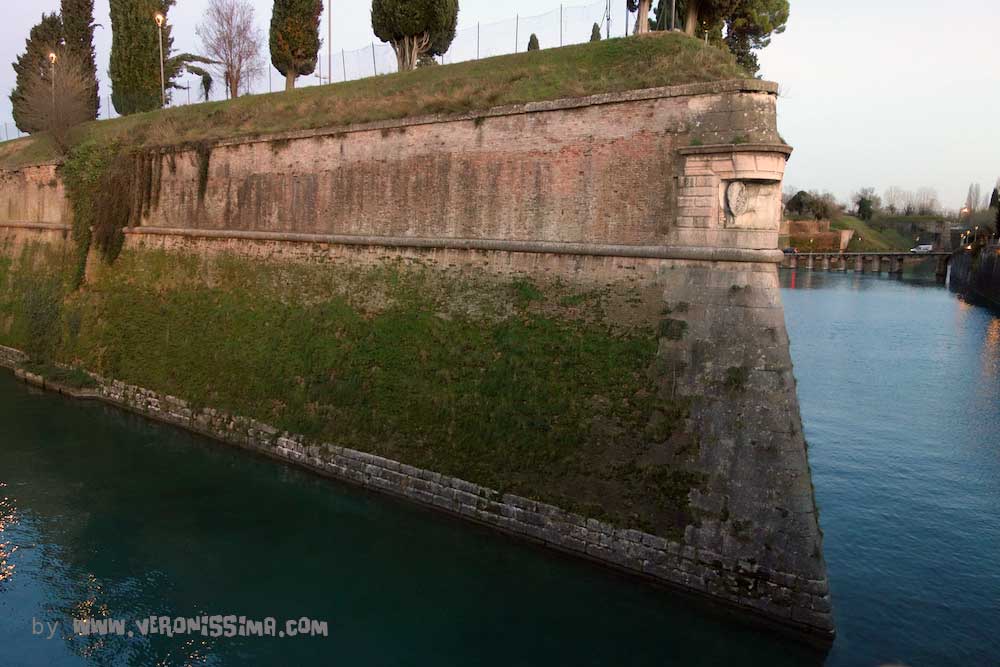
The guided visit continues towards Tognon Bastion, one of the most
beautiful and best preserved. It has the typical spearhead shape
of Italian Renaissance fortresses.
With the introduction of gunpowder and cannons it became
necessary rethinking the shape of fortresses so that they could withstand
artillery shots. Most medieval castles had a quadrangular plan, high, thin
and straight walls, reinforced at the corners by towers, also high and
square.
The new type of fortifications changed radically, and Peschiera
is a splendid example.
To reduce the target of the artillery, military
architects lowered the walls. To reduce the angle of incidence of
the bullets, they tilted the walls backwards and enlarged them
to better withstand the impact. They changed the geometry of the
plan of the fortresses that became polygonal to have more
oblique surfaces on which a cannonball would slide away, reducing the
damage.
The fortress of Peschiera has a fairly regular pentagonal shape.
The Tognon bastion looks just like the bow of a ship cutting
through the water.
Carved on the bastion is a winged lion of St. Mark's, symbol of Venice.
Napoleon's army damaged it attempting to erase what they considered a
symbols of the Ancient Régime.
From the bastion Tognon you'll enjoy a splendid view of Lake Garda and the
surrounding area from above. It is in a raised position compared to the
rest of the town.
During Habsburg domination the Austrians had placed here an optical
telegraph to communicate with the headquarters of Verona,
triangulating with the fortress of Pastrengo which is halfway.
The Old Town and Savoia Square
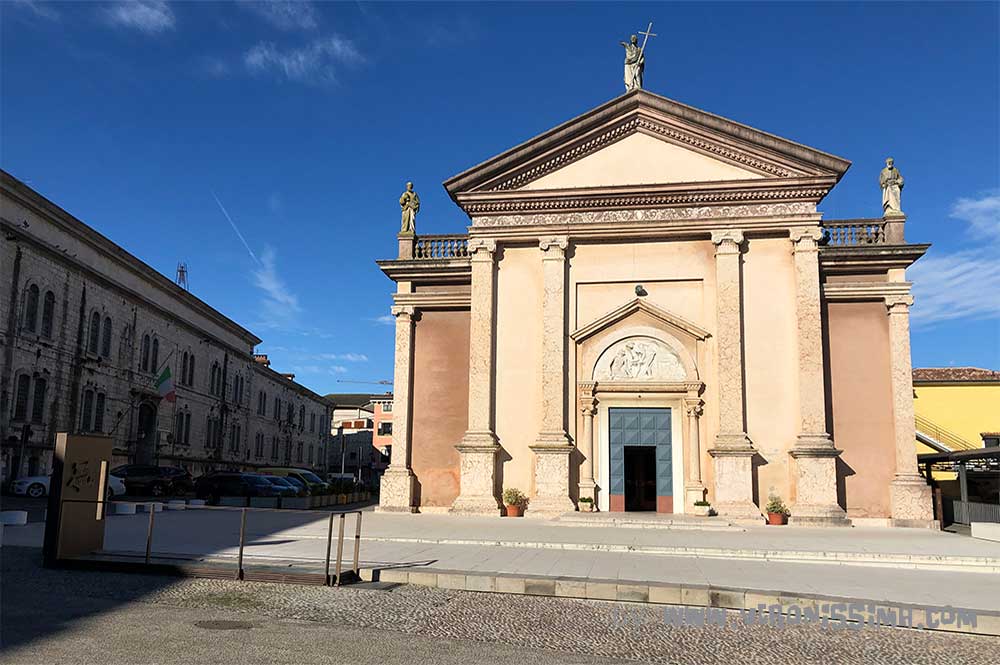
Going back down to the port of Peschiera you walk through the ancient village to get to Piazza Savoia, the old parade ground, the heart of Peschiera.
On one side there is the large structure of the Barracks "XXX
of May", the old military prison, in
use until the late 90s.
Originally it was the Austrian military hospital. They
built it after the Second War of Italian Independence 1858-59,
which with its bloody battles had shown the difficulties of taking proper
care of the wounded. In Solferino, not far from
Peschiera, following the bloody clash between the Italian, French and
Hapsburg armies, the Red Cross was born.
The military hospital was built in the most typical Hapsburg
style, in white squared stone, symmetrical, austere. It was
reinforced to withstand bombardments.
When Peschiera passed to Italy in 1866, it was transformed into a
military prison and dedicated to the date of the battle of
Goito, 30th May 1848, when for the first time the Italians took possession
of the area. At the moment it is in disuse.
The other building that characterizes the square is the church of San Martino. Austria, a Catholic nation, restored it for use by the occupying troops. It has the typical neoclassical style in vogue in the 19th century.
Archaeological Excavations of the Old Arilica
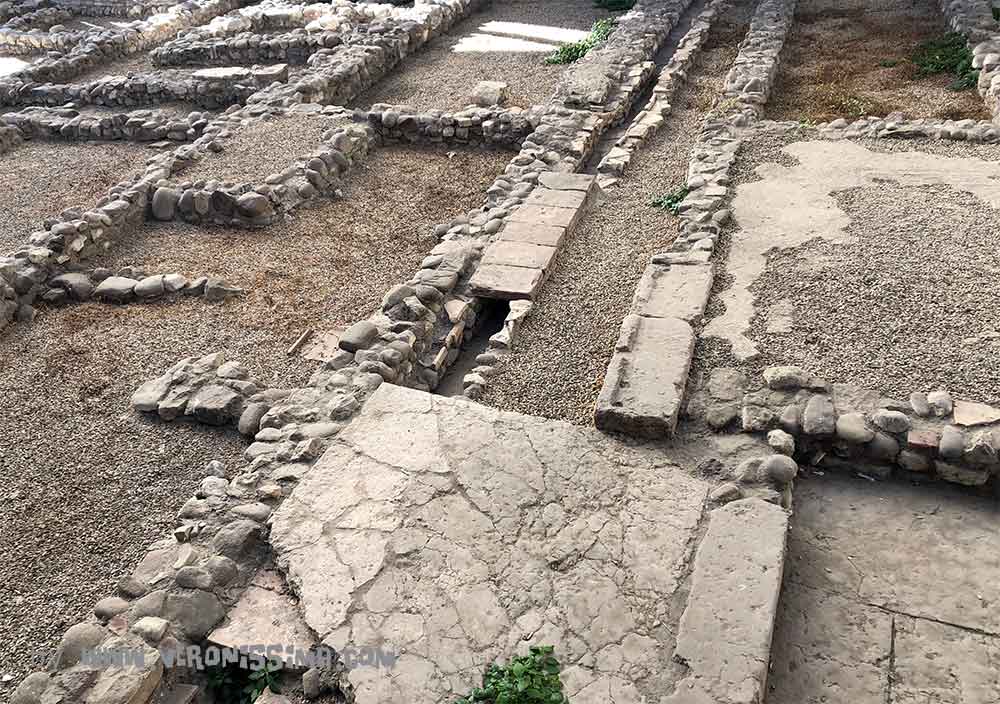
In front of and next to the church, archaeological excavations
have brought to light remains of the ancient settlement of Roman
times. In front of the church the remains of the old dock. Once
the square was actually filled with water from the lake and occupied by
the port. Next to the church you can see from above the excavation that
has brought to light a part of the Roman urban area.
The Roman name of Peschiera was Arilica.
Although there was a village of pile-dwellings here since the
Bronze Age, the centre developed a lot in Roman times
thanks to its favourable position for trade.
Arilica in fact was along the Via Gallica, the Roman road that
connected Verona with Milan and then continued eastwards, connecting in
Verona with the Via Postumia, and westwards, from Milan to Gaul (France).
In Arilica there was a very active transport service on boats
that connected all the lower lake, at the time called Benacus,
but also continued up north to the mountains. Pliny says
that in Arilica there were two guilds of boatmen. The excavation shows an
urban structure made up of fairly small and modest dwellings, perhaps some
warehouses and storage for goods, connected by paved alleys. Nothing to do
with the magnificence of the Roman villas of Sirmione and Desenzano. After
all, Arilica was a village of fishermen and boatmen.
The Voltoni Bridge
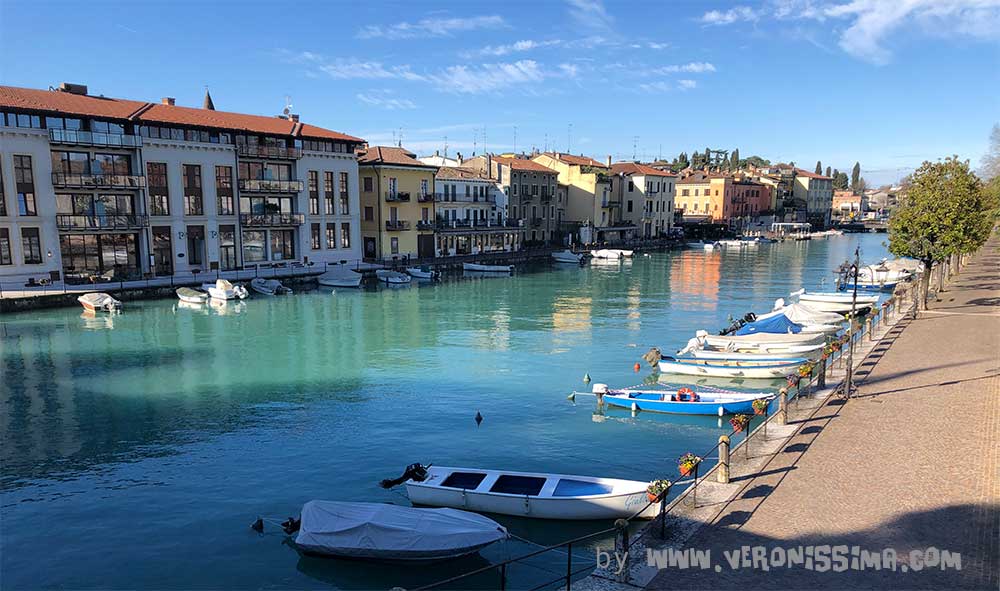
From Piazza Savoia the guided tour of Peschiera continues towards the Voltoni Bridge. The monumental bridge was built by the Venetians to connect the two islands that make up Peschiera. In the middle there is the widest of the four canals the river Mincio divides in. The view from the top of the bridge over the wide perspective constituted by the canal is remarkable. At the exit of the canal there was the system of bag-shaped-nets for eel fishing, now maintained only for demonstration purposes.
Verona Gate
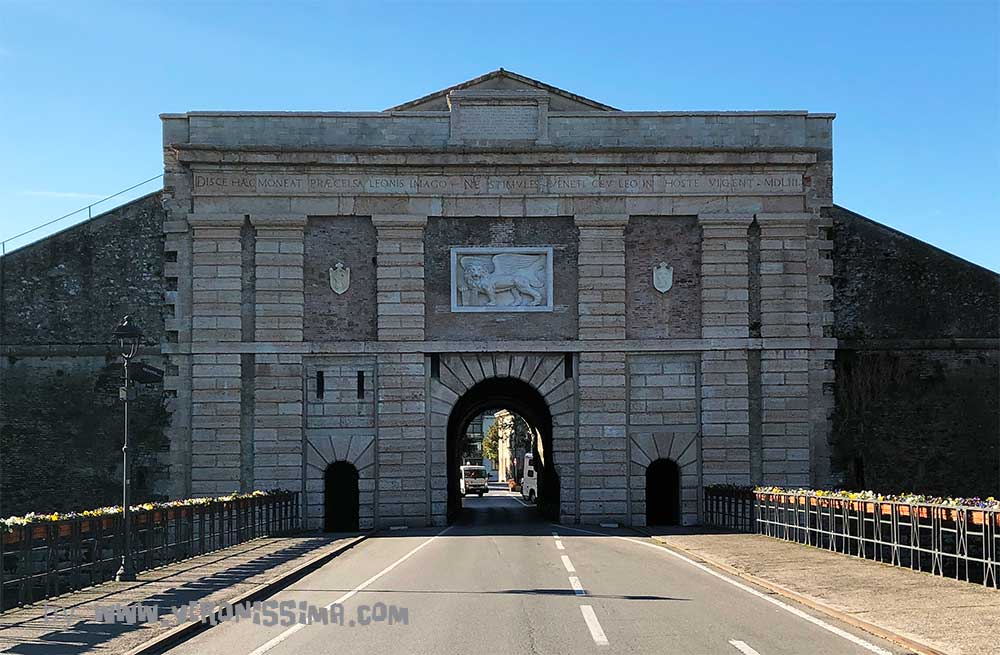
On the other side of the bridge your guide from Peschiera will take you
to Verona gate, the eastern entrance to the town. It is
a large monumental gate designed by Michele Sanmicheli, master of
Renaissance architecture. He built fortresses and
fortifications, villas, churches, palaces, in all the territories of the
Serenissima, especially in Verona, his hometown.
The gate has the typical sober elegance of Sanmicheli's style, with a
beautiful rusticated ashlar inspired by Roman antiquity,
perhaps the Arena of Verona itself, according to the
Renaissance style. The large winged lion above the entrance was placed
back after the annexation of Veneto to Italy in 1866, replacing the one
damaged by the French.
Lugana Wineries
Peschiera represents the main centre for the production of Lugana wine.
Just outside the town you will find the vineyards and
some interesting wineries where you can take guided
tours with tasting.
They can be the perfect complement to the tour of the historic centre of
Peschiera for a half-day itinerary.
Informazioni e visite guidate:
+39 333 2199 645 info@veronissima.com P.I. 03616420232 C.F. CPPMHL74L13L781C

 IT
IT 日本
日本 DE
DE FR
FR 中文
中文 ES
ES